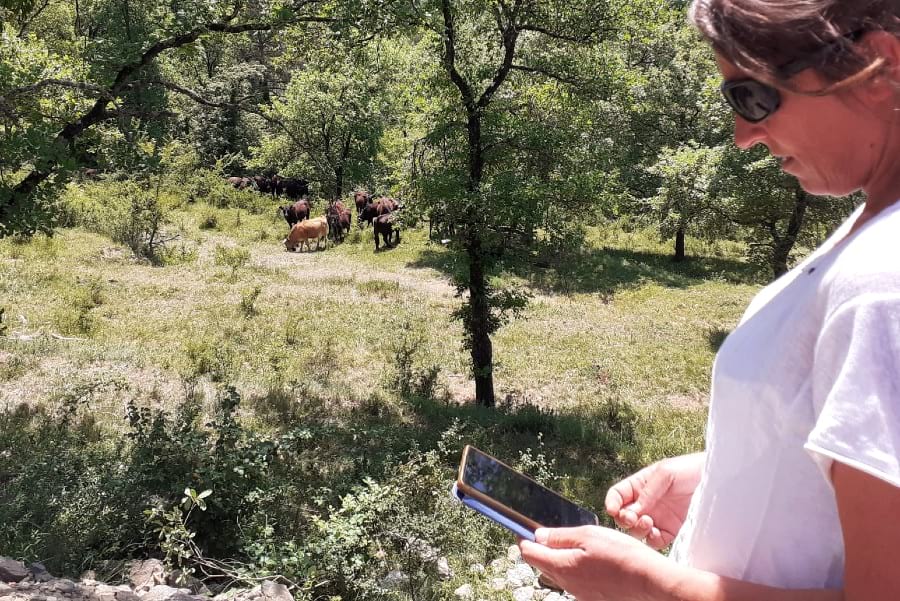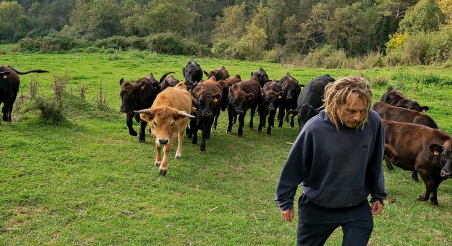An Osona farm has recently introduced an innovative herd control system, which is seen as the future of extensive grazing. As part of the BCN Smart Rural strategy, the program involves fitting geolocation collars on the animals and using virtual fences drawn with a mobile phone to define grazing areas. When an animal approaches the designated coordinates marked on the virtual map, the collar it is wearing activates and emits a distinctive sound to warn it not to proceed further. If the animal ignores the warning and continues, the sound is reinforced with a small electrical impulse to encourage it to stop. The intensity of the impulse is harmless and always lower than what the animal would experience if it were enclosed with electric wire.
This remote grazing solution eliminates the need for physical fences and allows shepherds and ranchers to monitor animals from their mobile phones. The application not only makes the farmer's job easier and more efficient but also places great emphasis on ensuring animal welfare. Currently, it can only be used to manage herds of cows, sheep, and goats. Developed by Nofence, a Norwegian company created by entrepreneur and rancher Oscar Hovde Berntsen, the technology allows animals to feed freely in meadows and forests, improving their diet and quality of life.
Using virtual enclosures for extensive livestock management can also help ranchers practice more sustainable forest management. This is because animals can access more areas, which reduces the fuel load on forests. It's important to note that reducing the forest mass and creating breaks in the vegetation are crucial for lowering the risk of large fires.
A pioneering project in Osona
The farm in Osona where the new technology is being tested is La Casanova, a small farm of grazing cows led by Mercè Oms from the forests of Sora. The cattle raiser practices animal rotation to improve soil structure and fertility. By using the app, she can plan better and avoid overgrazing.
Currently, 35 of her cows wear transmitter-receiver collars equipped with a satellite geolocation system. The data extracted is regularly analyzed to track the animals' locations, move the cattle remotely, and contribute to preserving the landscape. In addition, the farmer receives alerts on her mobile phone when a problem is detected, for example, when an animal leaves the defined area in the program.
Fireproof woods
In the sixth BCN Smart Rural Data Bites, it was highlighted that the Barcelona province is close to reaching a significant number of animals grazing extensively, which would help reduce the accumulation of potential fuel in the forests and improve their long-term conservation. However, the analysis report also emphasized the need to encourage the presence of herds throughout the entire territory, as 78% of extensive livestock farming is concentrated in just two out of the twelve districts of Barcelona: Osona and Berguedà. With a forest area exceeding 514,000 hectares and the reality of global warming, the risk of large fires is substantial. This is a major concern for the Barcelona Provincial Council, which views extensive livestock farming as a crucial tool for protecting the forests in the region.
According to Sònia Callau, coordinator of BCN Smart Rural, "If this system of virtual fences and collars with geolocation is widely adopted, the shepherds and cattle raisers in the province could make informed decisions to manage grazing more sustainably while also protecting and regenerating the natural environment. Additionally, it would enhance work-life balance and attract new entrepreneurs to the sustainable food sector."
For more information about this pilot test, please contact Pere Navarro, engineer of the Territorial Agrarian Directorate of Barcelona Provincial Council.
— BCN Smart Rural Editorial —




